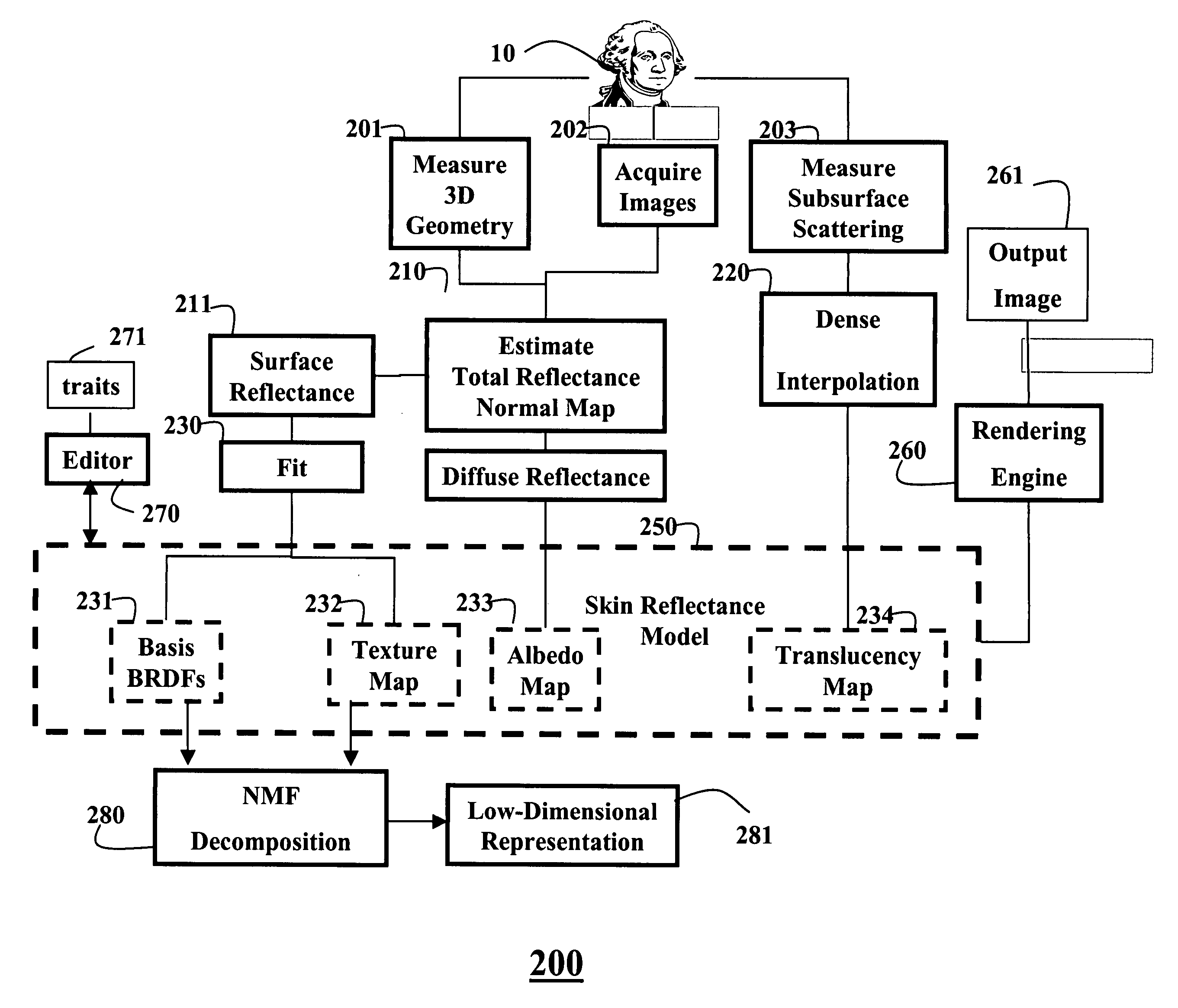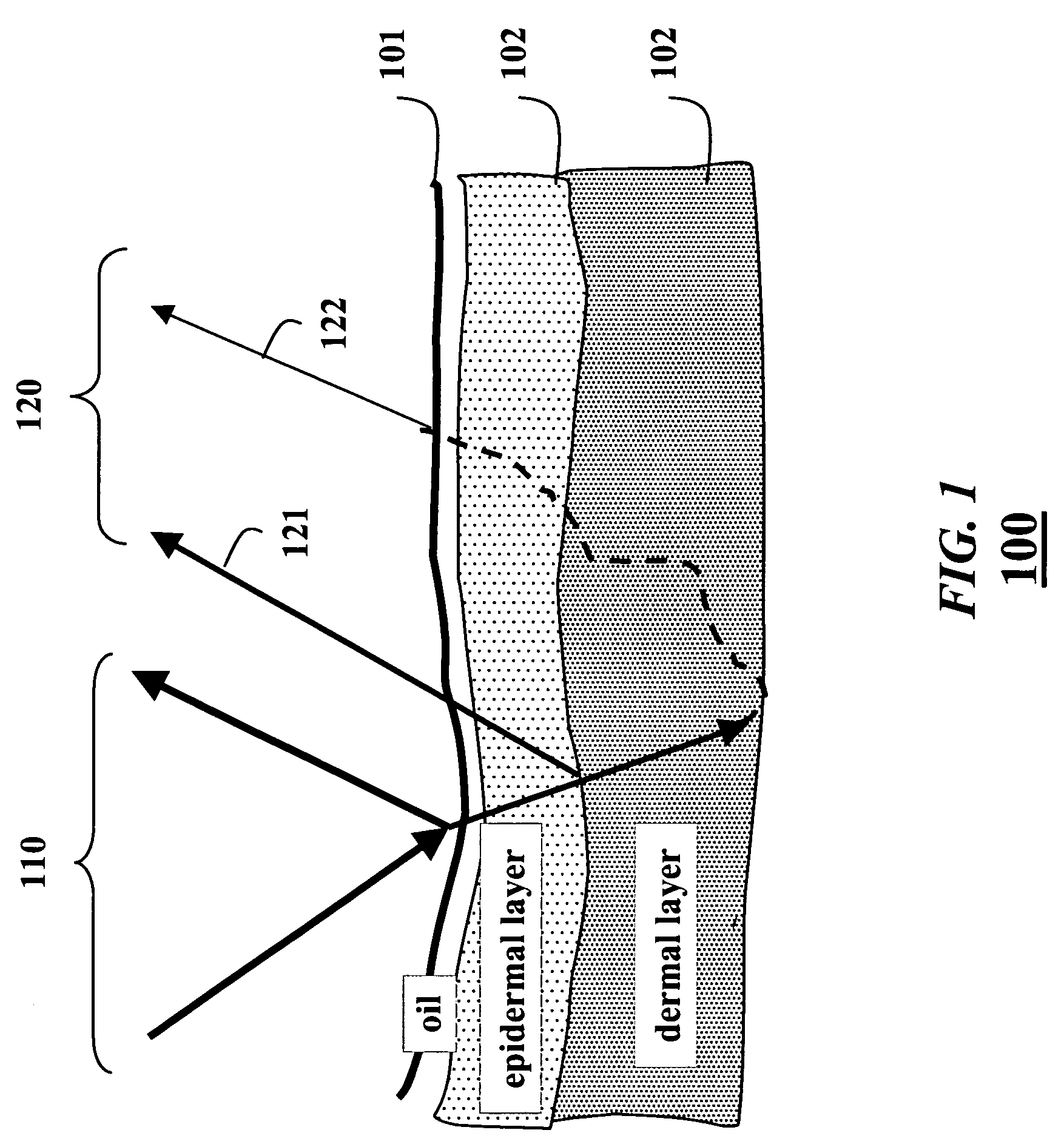Skin reflectance model for representing and rendering faces
a skin reflectance model and face technology, applied in the field of computer graphics, can solve the problems of no synthetic face model to date achieving the level of expressiveness of human faces, and the difficulty of dense sampling of an eight-dimensional function using conventional techniques, and one of the most difficult computer graphics challenges is rendering realistic human faces
- Summary
- Abstract
- Description
- Claims
- Application Information
AI Technical Summary
Benefits of technology
Problems solved by technology
Method used
Image
Examples
Embodiment Construction
[0034]Our invention provides a method and system for generating a skin reflectance model from bio-physical measurements of faces. Furthermore, the invention allows a user to edit the model, and to render novel images of faces.
[0035]Bio-Physically Skin Reflectance Model
[0036]As shown in FIG. 1, we describe overall skin reflectance as a sum of specular reflection 110 on a surface of skin due to an air-oil interface 101, and diffuse reflection 120 due to subsurface scattering. Most of the high-frequency spatial color variation in human skin is due to the epidermal layer, whereas strong light scattering in the dermal layer is a more slowly varying effect. Diffuse subsurface scattering is due to absorption 121 and light scattering 122 in the epidermal layer 102 and the dermal layer 103. The epidermis scatters light strongly and contains melanin along the interface to the dermis layer 103, which is highly absorbing. This absorption component is a local effect with high spatial variation a...
PUM
 Login to View More
Login to View More Abstract
Description
Claims
Application Information
 Login to View More
Login to View More - R&D
- Intellectual Property
- Life Sciences
- Materials
- Tech Scout
- Unparalleled Data Quality
- Higher Quality Content
- 60% Fewer Hallucinations
Browse by: Latest US Patents, China's latest patents, Technical Efficacy Thesaurus, Application Domain, Technology Topic, Popular Technical Reports.
© 2025 PatSnap. All rights reserved.Legal|Privacy policy|Modern Slavery Act Transparency Statement|Sitemap|About US| Contact US: help@patsnap.com



